
Drew in the Dragon Slide. Photo copyright (c) Jim Doty, Jr.
What to do with all of your digital photos! Have you thought about making your own calendar?
to continue, use the page links to the right

PC World has posted their list of the 100 Best Products of 2005. You can also look at the best products by category.
DVDs are replacing videotapes. DVD Recorders are replacing VCRs which will probably go the way of the 8-track. Some DVD Recorders will record TV shows to a hard drive and allow you to edit out the commercials before you record to a DVD. You can slo record your videotapes to DVD with a DVD Recorder. If you are worried about your treasured videotapes wearing out or deteriorating over time, now is the time to convert them to DVDs.
Prices are going down and quality is going up. So how do you pick a good unit? A list of good review sites is here. The same site also has its own reviews.

Freedom from Want – Painting (c) Norman Rockwell
A couple of nights ago I had a dream that I was in my grandfather’s house in Haxtun, Colorado. Other members of the family were also there, some of whom have long since passed on. We wandered through the house and talked.
to continue (and see more photos), use the page links at the right
Photo Mechanic is an excellent image viewer and editor for Windows PCs and Macs. You can download the current beta (version 4.4) here.

Asian Festival – Columbus, Ohio. Photo copyright (c) Jim Doty, Jr.
In August, I did a “First Look” comparison of the Canon 20D and the new Canon 5D. A few days ago, Phil Askey at DP Review published a detailed review of the Canon 5D.
to continue, click the page links at the right
As promised, a few more photos.
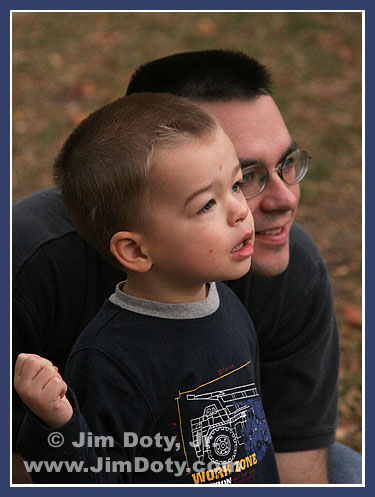
Our son Jim shows his son Drew the sliver of a moon next to Venus in the early evening sky.
Photo copyright (c) Jim Doty, Jr.

Our grandson Ryan. Photo copyright (c) Jim Doty, Jr.

Drew talking to his uncle Jared. The call was at the end of supper so he isn’t cleaned up yet. Photo copyright (c) Jim Doty, Jr.

Ryan. Photo copyright (c) Jim Doty, Jr.

Our grandson Ryan. Photo copyright (c) Jim Doty, Jr.
As my friend Vern recently observed, once you are used to having your grandchildren around, it would be really hard to have them move away. Vern is right.
We are taking advantage of a chance to spend a couple of days with our children and grandchildren. These are moments to be treasured. Two photos from our last trip are above and below. More photos from our visit are here and here. Photos from this trip will appear here soon.
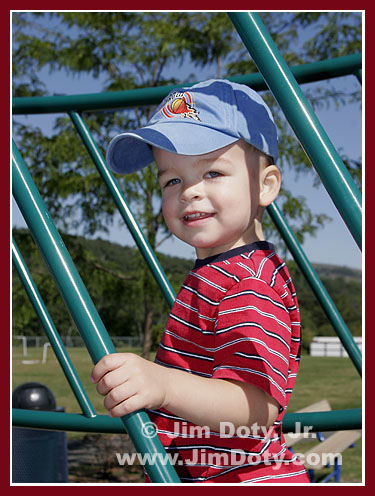
Our grandson Drew. Photo copyright (c) Jim Doty, Jr.
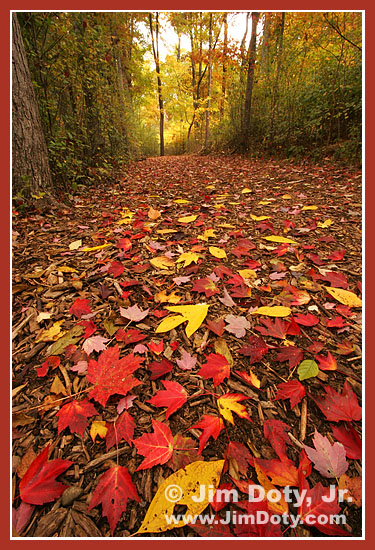
The Path, West Lake Nature Preserve. Portage, Michigan. Photo copyright (c) Jim Doty, Jr.
Michigan has some of the most splendid fall color in the country. Maple trees turn orange, red, and crimson, and fill the hillsides with glorious color.
to continue, click the page links to the right
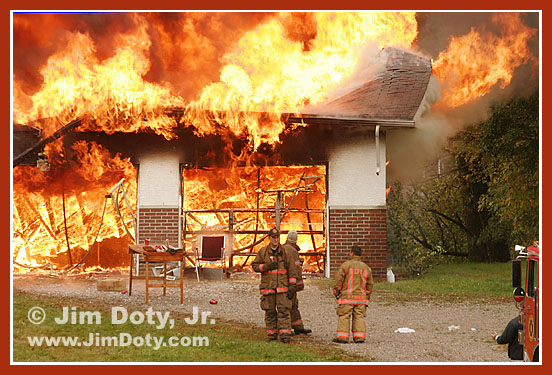
House Fire. Photo copyright © Jim Doty, Jr.
It was cloudy and raining when I took this photo so I set my camera at ISO 400 to give me a small enough aperture for enough depth of field plus a shutter speed fast enough to keep from blurring the fire.
to continue, click the pages links to the right
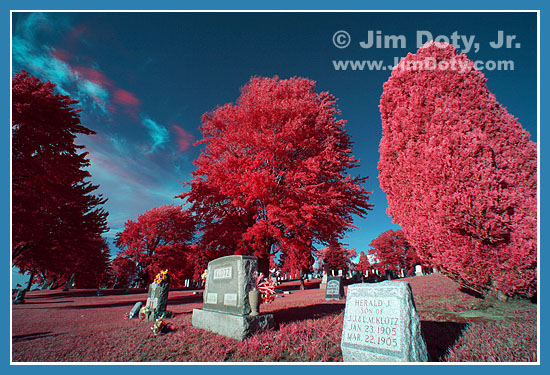
Canon 20D Color Digital Infrared Image. Photo copyright (c) Jim Doty, Jr.
Color infrared photography with film and filters can yield some wonderful and oddly colored images, but the significant complications involved kept most photographers from delving into the infrared realm. Kodak Ektachrome EIR film is great stuff but hard to work with. Fortunately, it is much easier to do color infrared photography with a digital camera. Now you can have the fun of doing color infrared photography without all the hassles.
to continue (and see more photos), click the page links at the right
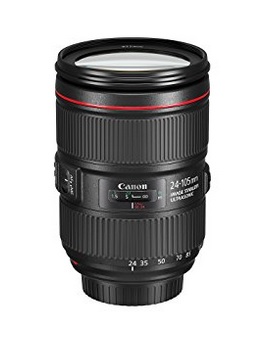
I wrote about this lens when it was announced last August. Enough reviews have been posted to give this lens a second look. The news is very good. Read more at my article here.
You can buy this lens in this section of my Amazon powered photography store.
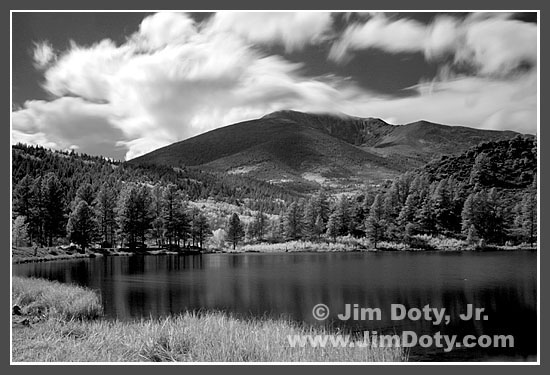
O’Haver Lake and Mt. Ouray (Colorado) in infrared light. Canon 20D digital camera with Hoya R72 filter. Photo copyright (c) Jim Doty, Jr.
It is possible to capture infrared images with the Canon 20D, the Canon 10D, and a number of other digital cameras that aren’t specifically designed for infrared photography.
to continue, click the page links at the right
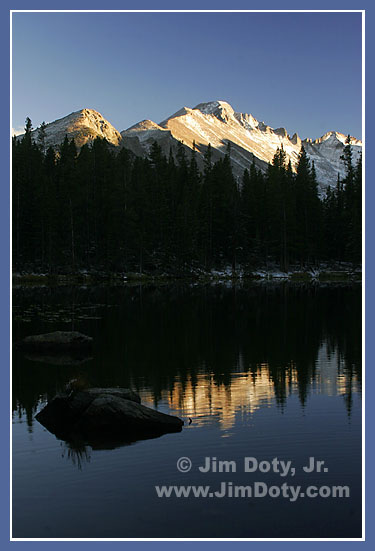
Long’s Peak Reflected in Nymph Lake, Rocky Mountain National Park, colorado.
Photo copyright (c) Jim Doty, Jr.
It was late in the day and the last bit of sunlight was disappearing as shadows of other mountains crept up the side of Long’s Peak. I tried several locations on the shore of Nymph Lake and chose one which would show the rippled reflection of Long’s Peak along with a rock in the water to add a foreground center of interest at lower left to balance the mountain ridge at the upper right.
Canon 20D. Canon EF 28-135mm lens at 28mm. Aperture: f/16, shutter: 1/5 second.

A bull elk struts his stuff, Rocky Mountain National Park, Colorado.
Photo copyright (c) Jim Doty, Jr.
If you go to Rocky Mountain National Park during the fall rut, you are almost guaranteed to see large herds of elk. The rut begins in early September and ends in mid-October. The last week or two of September through the first week in October is a good time to go to see both elk at their best and fall color.
to continue (and see more photos), click the page links at the right

Aspen, Marshall Pass, Road, Colorado. Photo copyright (c) Jim Doty, Jr.
A prior post featured a photo from Marshall Pass Road in Southern Colorado. This is one of the most beautiful drives in Colorado if you are looking for fall color.
When I was growing up, my family would go camping several times a year at O’Haver Lake, south of Poncha Springs. I would watch the rare vehicle drive by on the road up above the lake and wonder where the road went. It wasn’t until I was married and had children of my own that we decided to find out. We drove the Marshall Pass Road for the first time. That must have been over 20 years ago. We were stopped before we reached the top by 20 foot snow drifts across the road. A second attempt a year or two later was successsful since we waited late enough in the summer for the snow to have melted. It has been a favorite drive of mine ever since.

Aspen, Marshall Pass, Road, Colorado. Photo copyright (c) Jim Doty, Jr.
There are large stands of aspen at what seems like every turn in the road. It is a beautiful drive in the fall as the aspen turn gold. It is a good drive any time from mid-morning to late afternoon. Going from east to west, Marshall Pass Road leaves U.S. 285 a few miles south of Poncha Springs (take the O’Haver Lake Road, and then take Marshall Pass when the road splits). It crosses the Continental Divide on the south slopes of Mt. Ouray and connects with U.S. 50 at Sargents, Colorado. The road is passable (once the snow melts) by any passenger car or truck.

Aspen, Marshall Pass, Road, Colorado. Photo copyright (c) Jim Doty, Jr.
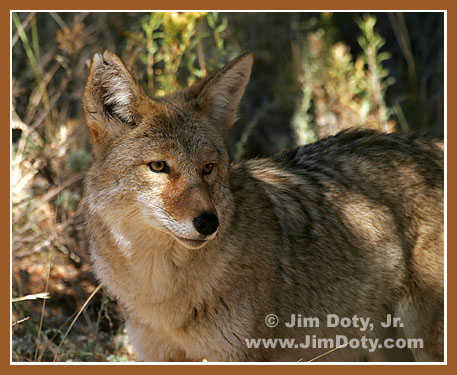
Coyote near Bear Lake Road, Rocky Mountain National Park, Colorado.
Photo copyright (c) Jim Doty, Jr.
Years ago, I read a book by Erwin Bauer that recommended having a camera and long lens ready to go when you are in locations that might provide brief opportunities to photograph wildlife. Not long after that, I was driving across the Texas panhandle and a coyote stopped right next to the road. I pulled over and looked at it and it stared at me for 10-15 seconds before it took off. I would have had a nice picture if my camera was ready, but it was zipped up in my camera bag. Not enough time to get it out before the coyote disappeared.
to continue, click the page links at the right
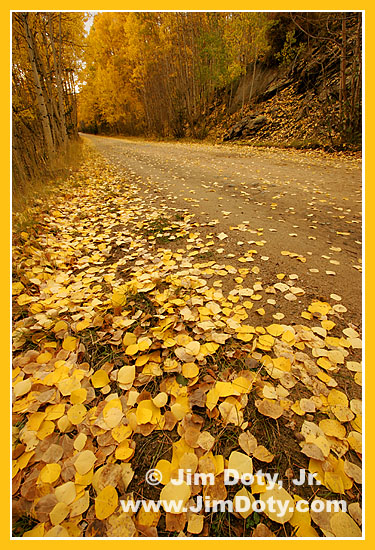
Aspen Leaves, Marshall Pass, Colorado. Photo copyright (c) Jim Doty,Jr.
It was a beautiful fall day on Marshall Pass, in southern Colorado. Aspen leaves were beginning to blanket the road. To emphasize the fallen leaves, the camera and lens were placed low to the ground. A 10mm focal length was used to give a very wide angle of view (equivalent to 16mm on a 35mm film camera) . The aperture was f/22 to maximize depth of field.
Canon 20D, Canon EF-S 10-22mm lens at 1omm. Aperture: f/22. Shutter: 1/8 second.
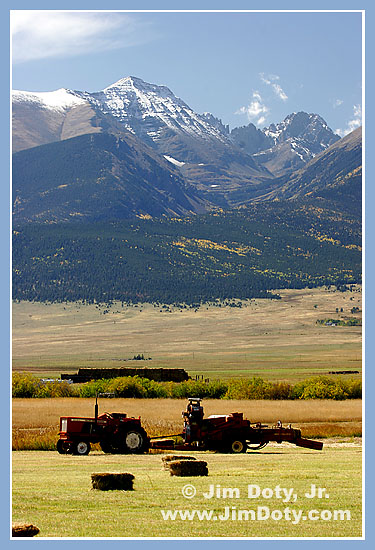
Wet Mountain Valley, Marble Mountain, Crestone Needle, and Crestone Peak.
Photo copyright (c) Jim Doty, Jr.
The Wet Mountain Valley in southern Colorado is sandwiched between the Wet Mountains on the east and the Sangre de Cristo (“Blood of Christ”) Mountains to the west. It is a beautiful place to take pictures. The whole Sangre de Cristo range rises dramatically from the valley floor and is quite spectacular, especially when snow covered. Pictured above is a small slice of the range.
Canon 20D camera. Canon EF 28-135mm IS lens at 105mm. Aperture: f/11. Shutter: 1/30.

Bear Basin Ranch, Westcliffe, Colorado. Photo copyright (c) Jim Doty, Jr.
How often do you get invited by someone you just met for the first time to visit their horse ranch, wander the grounds, take pictures, and even take pictures inside their cabin?
to continue (and see more photos), click the page links to the right